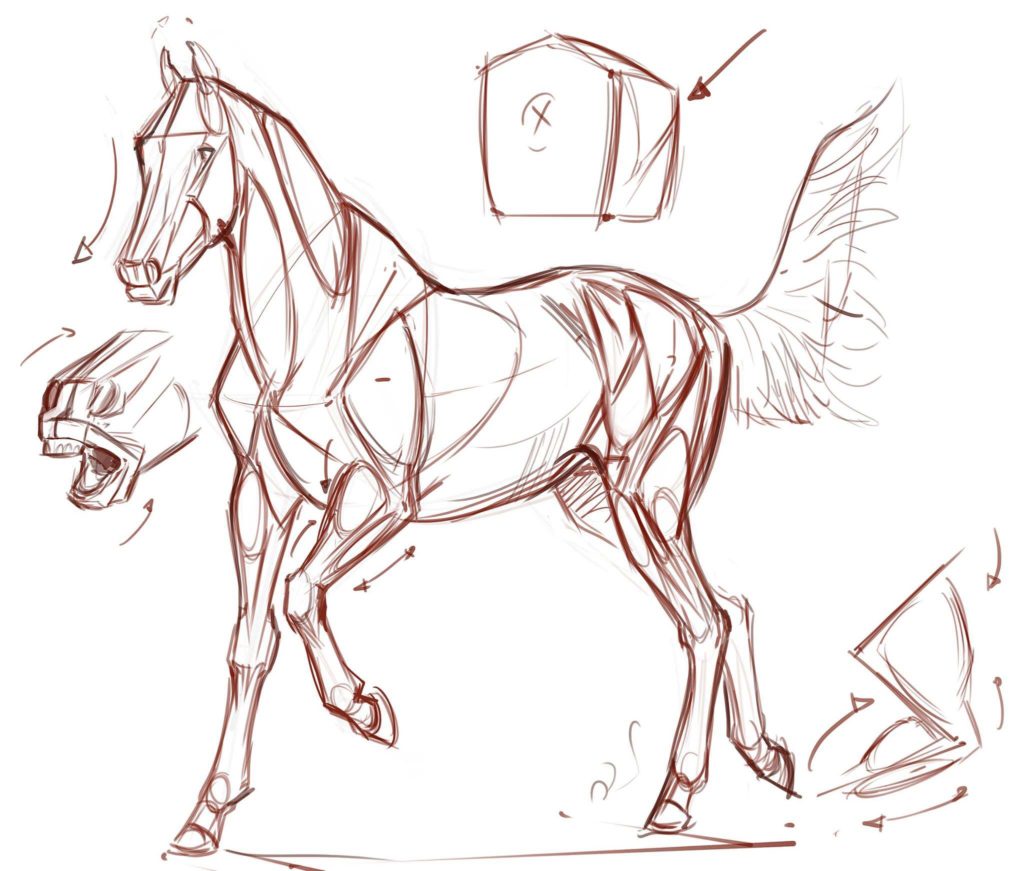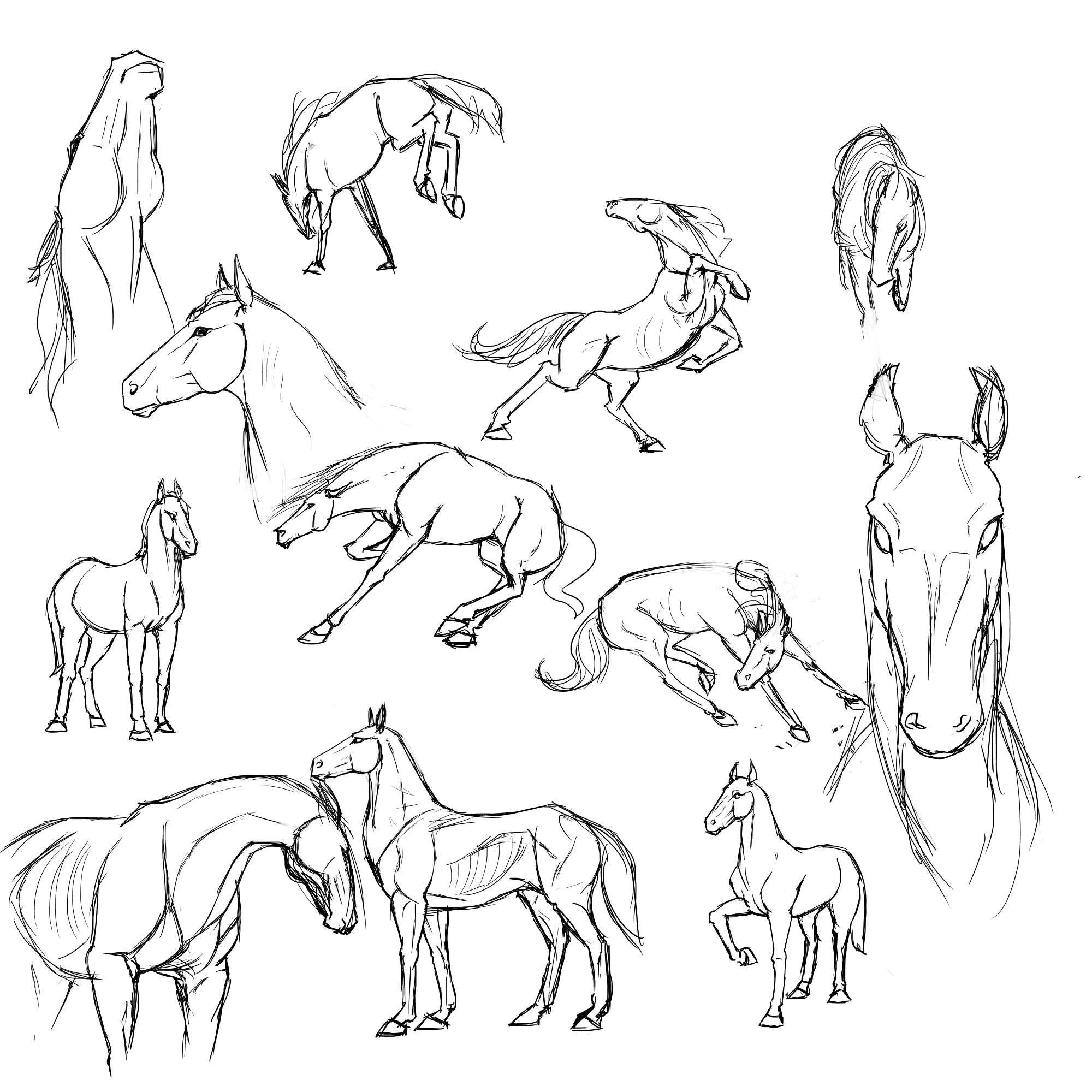
Introduction
When it comes to drawing horses, having a good reference is crucial. Whether you are a beginner or an experienced artist, having access to horse drawing references can greatly enhance the quality of your artwork. In this article, we will explore various sources of horse drawing references and provide tips on how to use them effectively.
1. Online Image Libraries

One of the easiest ways to find horse drawing references is by utilizing online image libraries. Websites like Pixabay, Unsplash, and Pexels offer a wide range of high-quality horse images that you can use as a reference for your drawings. These images are usually free to use and can be a great starting point for your artwork.
2. Animal Anatomy Books

Understanding the anatomy of a horse is essential for creating realistic drawings. Animal anatomy books, such as "The Anatomy of the Horse" by George Stubbs, provide detailed illustrations and explanations of the horse's skeletal structure, muscles, and proportions. By studying these books, you can gain a deeper understanding of how to accurately depict a horse in your drawings.
3. Equestrian Magazines

Equestrian magazines often feature stunning photographs of horses in various poses and settings. These magazines can be a valuable source of inspiration and reference material for your drawings. Consider subscribing to equestrian magazines or visiting your local library to explore their collection of magazines.
4. Horse Photography Websites

There are numerous websites dedicated to horse photography, where you can find a wide range of high-resolution images of horses. Websites like HorseStockPhotos.com and EquinePhotographers.org offer a vast collection of horse photographs that can serve as excellent references for your drawings.
5. Horse Anatomy Apps

Thanks to advancements in technology, you can now access horse anatomy references right on your smartphone or tablet. Horse anatomy apps, such as "Horse Anatomy: Equine 3D" and "Horse Anatomy Atlas," provide interactive 3D models of horses that allow you to examine and understand their anatomy from various angles.
6. Visiting Equestrian Events

If you have the opportunity, attending equestrian events can be a fantastic way to observe horses up close and gather valuable reference material. Whether it's a horse show, rodeo, or horse racing event, you can observe the horses' movements, postures, and expressions, which will greatly benefit your drawings.
7. Sketching from Life

Nothing beats drawing from life when it comes to capturing the essence of a subject. If you have access to horses, consider sketching them directly from life. Observe their anatomy, the way they move, and their unique characteristics. Sketching from life will help you develop a deeper understanding of horses and improve your drawing skills.
8. Online Tutorials and Courses

Many artists and art instructors offer online tutorials and courses specifically focused on horse drawing. These resources can provide valuable insights, techniques, and step-by-step guidance on how to draw horses. Websites like Udemy and Skillshare are great platforms to explore various horse drawing courses.
Conclusion
Having access to horse drawing references is essential for creating realistic and accurate artwork. Whether you utilize online image libraries, study anatomy books, or attend equestrian events, there are numerous sources available to enhance your horse drawing skills. Remember to always give proper credit to the reference sources you use, and keep practicing to improve your artistic abilities.